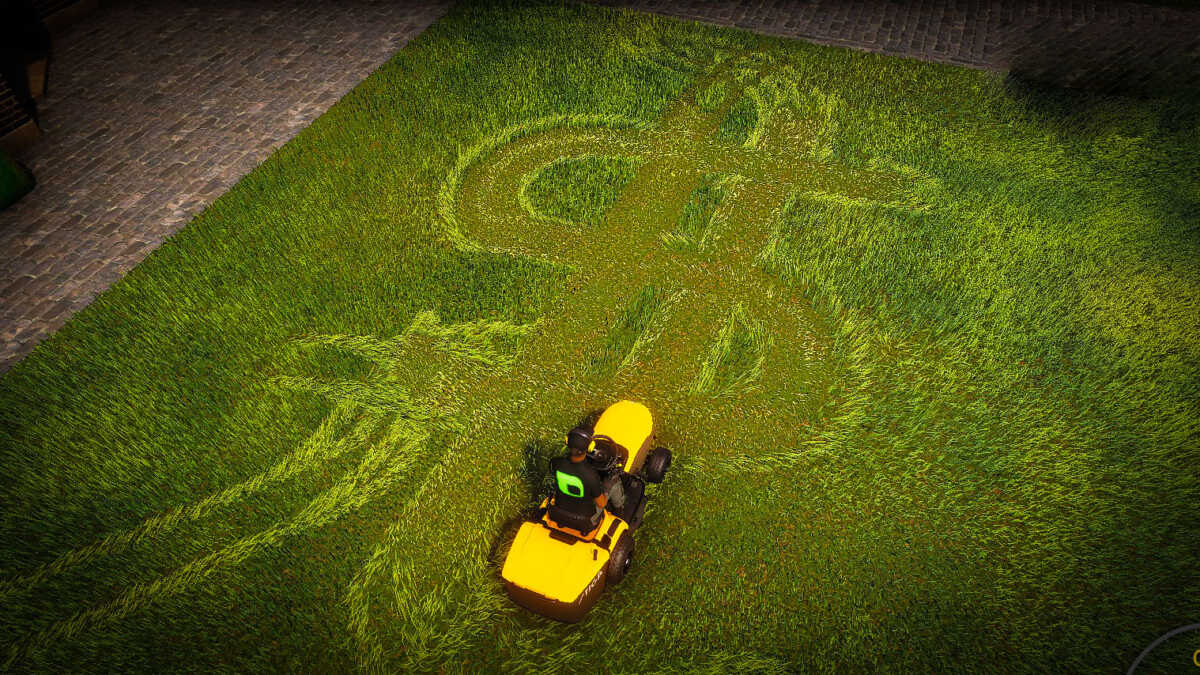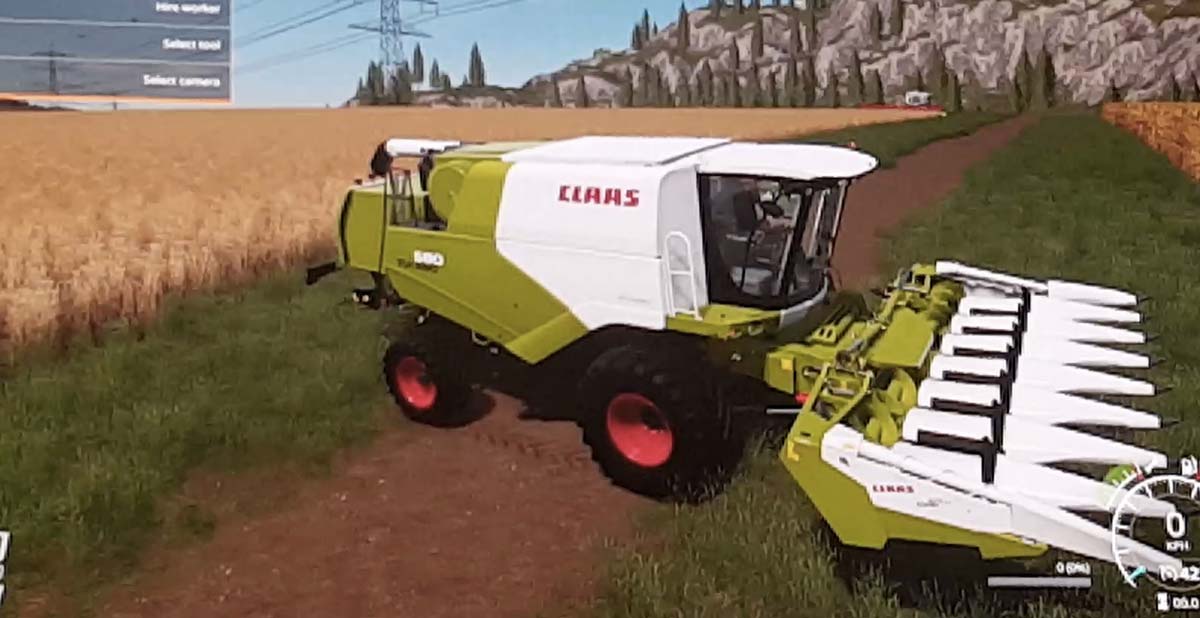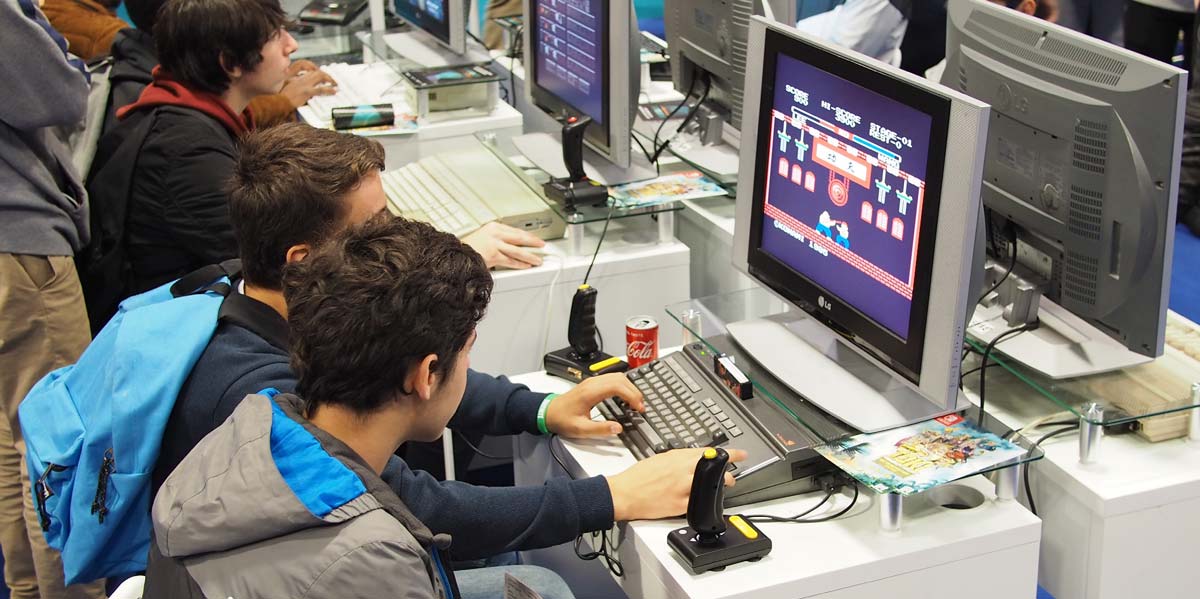Realismus Midding a travaillé sur une refonte de l’élevage pour le rendre plus complet mais aussi plus complexe. L’âge, le poids et le sexe de chaque animal que vous possédez sont simulés et les types d’animaux originaux ont été remplacés par des races réelles.
Il n’a cependant pas été possible de modifier l’aspect visuel des animaux, ils resteront donc identiques quels que soient leur âge, leur sexe et leur poids. Mais le modèle visuel ingame correspond à la bonne race (noir et blanc pour les Prim’Holstein, etc.). Chaque race a son usage. Pour les vaches, certaines sont destinées à la production de viande, tandis que d’autres sont des races spécifiques pour la production de lait. Pour avoir de la descendance, il faut impérativement mettre un mâle. De même, pour avoir du lait, il faut faire un veau. Voici un tour d’horizon de toutes les races et de leurs caractéristiques, ainsi qu’un point sur l’alimentation.
Bétail
- Limousine – La «race carcasse». La Limousine est un animal coûteux mais qui grandit très vite. Elles se revendent à un bon prix pour leur viande.
- Salers – La Salers est une race bon marché pour les agriculteurs débutants. Elles fournissent une bonne viande et se revendent à un bon prix.
- Holstein – La reine de la production de lait. Cette race nécessite beaucoup de nourriture et coûte cher à l’achat, mais c’est la race qui produit le plus de lait.
- Ayrshire – Faible consommation d’aliments et faible prix par tête, mais la production de lait est faible.
- Brahman – Une race spécifique tolérante à la chaleur avec des exigences alimentaires marginales. Ils sont connus pour leur potentiel de gain et leur bon rendement en carcasses. La tolérance à la chaleur n’est actuellement pas modélisée dans Seasons.
Mouton
Dorset – Une grande race de moutons à la croissance modérément rapide, à la production de laine modeste et nécessitant une quantité moyenne d’aliments à l’âge adulte. Est relativement prolifique, bref une race pour débutant en production ovine.
Mérinos – Une race moyenne utilisée pour la production de laine. Il grandit lentement, n’est pas très prolifique, mais ne nécessite pas beaucoup de nourriture à l’âge adulte.
Suffolk – Une grande race de moutons qui grandit extrêmement vite, produit une quantité modeste de laine, nécessite beaucoup de nourriture à l’âge adulte, et est prolifique.
Dorper – Une race de taille moyenne qui grandit vite sans produire de laine. Très prolifique et à maturation rapide. Nécessite peu de nourriture à l’âge adulte.
Les cochons
Yorkshire – Cette race de porc est un animal à croissance très rapide mais nécessite un capital élevé pour l’achat initial.
Gloucestershire Old Spot – Le Old Spot est un animal à croissance plus lente, mais il est beaucoup moins cher à l’achat. Très robuste et excellent pour le fermier débutant.
Spotted – Reconnus pour leur qualité de carcasse, les Spotted grandissent relativement vite et peuvent être achetés à un prix modique.
Berkshire – Le Berkshire est un animal à la croissance rapide qui nécessite un capital modeste pour l’achat. Est connu pour sa viande savoureuse.
Poulets
White Leghorn – C’est la volaille de prédilection si les œufs sont au sommet de vos priorités. Cette race nécessite moins de nourriture que les autres races.
Croix de Cornouailles – Cette volaille de chair connaît une croissance extrêmement rapide et une rentabilité rapide, mais nécessite beaucoup de nourriture.
Rhode Island Red – Le Rhode Island Red est une race hybride (œufs et viande). Elle nécessite une quantité d’aliments comprise entre celle de ses pondeuses et les volailles de chair.
Coq – Ce mâle est principalement utilisé pour la reproduction et fonctionnera pour fertiliser les œufs produits par vos poulettes et pour produire des poussins. Remarque: Vous n’avez pas besoin d’un coq pour produire des œufs.
Les nouvelles règles du jeu
La productivité dans le jeu de base est à nouveau remplacée par un indicateur de santé. La santé augmente avec le temps quand tous les besoins des animaux sont satisfaits. Notez cependant que s’ils ne sont pas bien nourris, la perte de santé peut survenir plus rapidement que l’augmentation.
Avec le mod Seasons 19, les auges des animaux ne contiennent que 48 heures (temps de jeu) de nourriture, ce qui signifie qu’il est préférable de vérifier vos animaux tous les jours.
L’apport alimentaire de chaque animal dépend de son âge et de son poids. La prise de poids dépend également de leur âge et de leur poids, ainsi que de l’alimentation. Pour maximiser le gain de poids, le meilleur aliment doit être fourni. La quantité annuelle d’aliments nécessaire dans chaque enclos est indiquée dans le menu. Cette quantité d’aliments tient compte de la croissance des animaux, mais suppose que leur santé reste constante. Avec l’augmentation de la santé, la croissance augmentera également. Conserver certaines réserves de nourritures peut donc être une bonne chose.
Les bovins peuvent produire du fumier ou du lisier, mais pas les deux. Ce qu’ils produisent dépend de la présence de paille. Cela correspond mieux à la manière dont les véritables fermes sont gérées. Ne pas utiliser de paille entraînera une légère baisse de productivité, mais le lisier est beaucoup plus facile à manipuler et vaut plus pour un agriculteur que le fumier.
Prendre soin de la santé des animaux est devenu d’une importance capitale. Les garder toute la nuit dans une remorque va tuer les animaux (c’est-à-dire qu’ils mourront à minuit) en raison du manque de nourriture, d’eau et de mouvement.
Les poules pondent des œufs. Pour avoir des poussins, prenez un coq. L’idéal est 1 coq pour 8 poules. Les chances de reproduction diminuent avec moins de coqs. Si la poule couve, aucun œuf n’est produit.
Élever des animaux pour la production de viande est maintenant possible. À mesure que les animaux prennent du poids et vieillissent, leur taux de croissance diminue, tandis que la consommation alimentaire suit généralement le poids. La clé pour maximiser les profits consiste à trouver le point d’équilibre entre le poids optimal et l’âge des animaux. Le prix par kg est plus élevé chez les jeunes animaux et le gain de poids ralentira avec l’âge.
Les chevaux, un cas à part
Les chevaux sont, dans Seasons, traités différemment des autres animaux. Le jeu tente d’imiter une ferme qui fournit un logement et des soins de base à un cheval pour son propriétaire (pension complète).
Un cheval peut être amené à la ferme sans échange d’argent. Il doit être nourri, nettoyé et monté tous les jours. Selon le nombre de soins reçus, un revenu est fourni chaque jour. Certaines races nécessitent plus de circonscription pour gagner le même montant que les autres races. Les chevaux fournissent également plus d’argent quand ils sont en pleine forme.
Pâturage
Le mode de pâturage de Farming Simulator 17 a été intégré directement à Seasons 19. Les animaux en enclos pourvus d’herbe consommeront l’herbe en remplacement de l’aliment dans l’auge. Attention, l’herbe dans un enclos peut déjà être complètement mangée. Cela dépend de la taille de l’enclos, de la quantité d’animaux et de la période de l’année.
Les modifications apportées aux enclos pour animaux en objets plaçables, qui disposent de leur propre gazon, permettent une détection automatique de l’herbe, peu importe la map sur laquelle vous jouez. La seule exigence est que le enclos ait de l’herbe.
Si vous décidez de fournir d’autres aliments dans l’auge, les animaux cesseront de paître et mangeront plutôt le meilleur aliment. Cela n’a pas d’importance pour les moutons, car le foin et l’herbe sont également bons pour la nourriture. Pour les vaches, le pâturage augmente de 60% la production. Il pourrait être rentable de laisser les vaches laitières paître pendant la période sèche (quand elles ne produisent pas de lait).
Pompe à eau
Les animaux nécessitent beaucoup d’attention. Les besoins en eau des animaux ont été mis à jour pour être plus réalistes. Pour faciliter la tâche des joueurs dans les abreuvoirs, une nouvelle pompe à eau peut être placée à proximité de l’enclos des animaux : elle maintiendra automatiquement le niveau d’eau des abreuvoirs à un minimum de 15%. Le coût de l’eau est soustrait de votre compte.






Et de plus, mes porcelet Yorkshire font maintenant 100 kg, doit je les vendre ou continué à les engraissé ? Sachant que la pour l’instant j’ai un gain de 1.3%. Prix d’achat : 250 € prix de vente : 325 € Et ils ont 0.4 ans
Merci pour ta réponse 🙂
Salut SimulAgri, super vidéo 😉
Mais petite rectification, il n’y a pas besoin de « mâle », en réalité on ne croise pas des Holstein avec des limousine xD
Que des Holstein ou que des Limousines voila 😉
Les animaux deviennent fertiles au cours du temps j’en ai l’expérience, j’ai une partie sur le mod saison sur Ellerbach.
Et je pense qu’il y a le système d’insémination animale artificielle pour les animaux 😉
Continu comme ça et super guide 🙂
Ps : j’ai mis que des Yorkshire (cochon blanc) dans mon enclos et j’ai eu des porcelets, et qui ont bien grandi maintenant 😉
Oui, quand je dis pas d’insémination, je sous-entendais qu’il ne fallait pas enfiler les gants pour aller titiller de la vache 😀
Alors pour le mâle, il semblerait que pour le moment ça fonctionne comme tu le dis, mais à terme les développeurs souhaitent pouvoir ajouter des animaux (pour l’instant c’est le jeu qui bloque) et donc avoir des taureaux Holstein. Ce serait top.